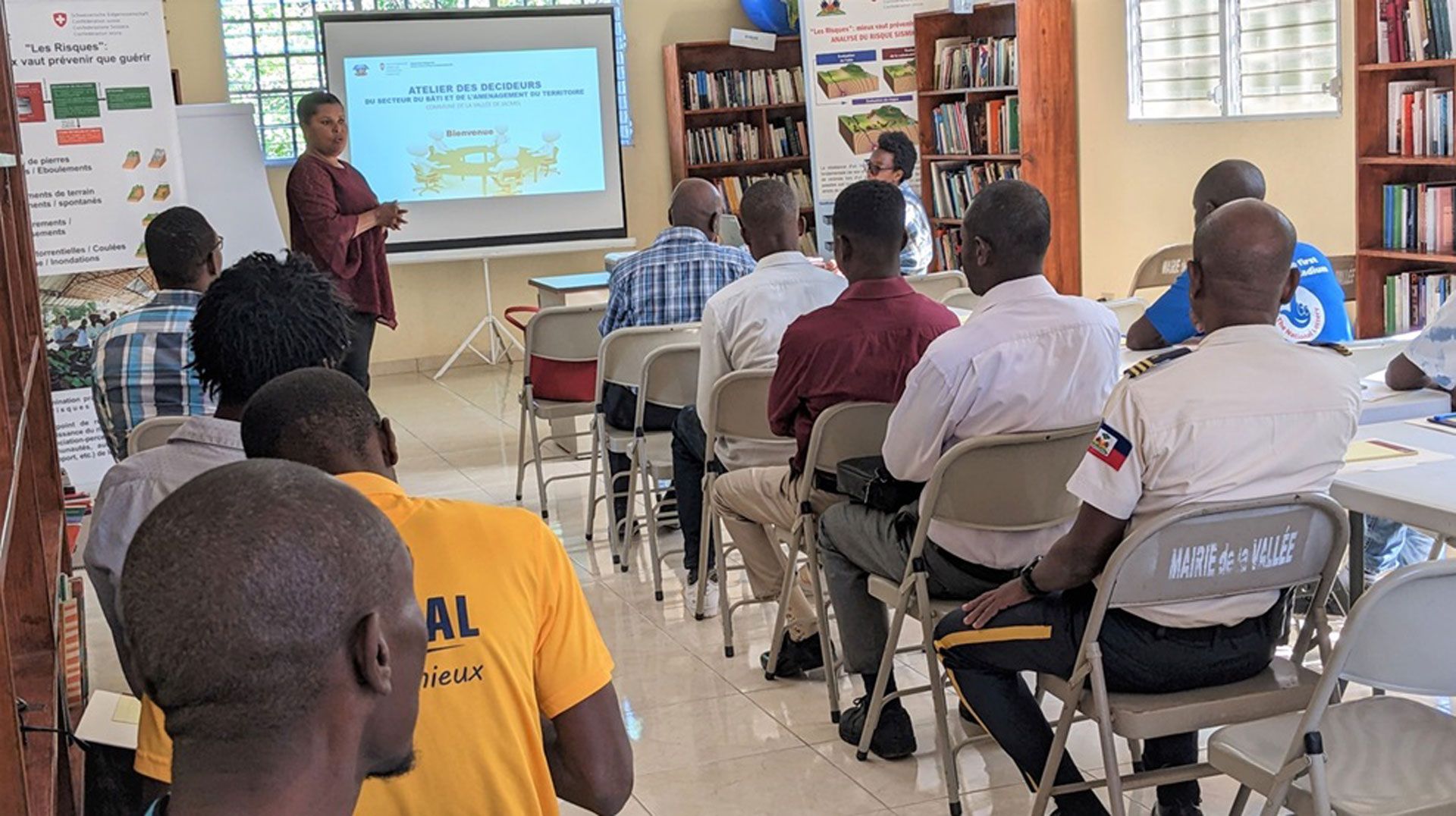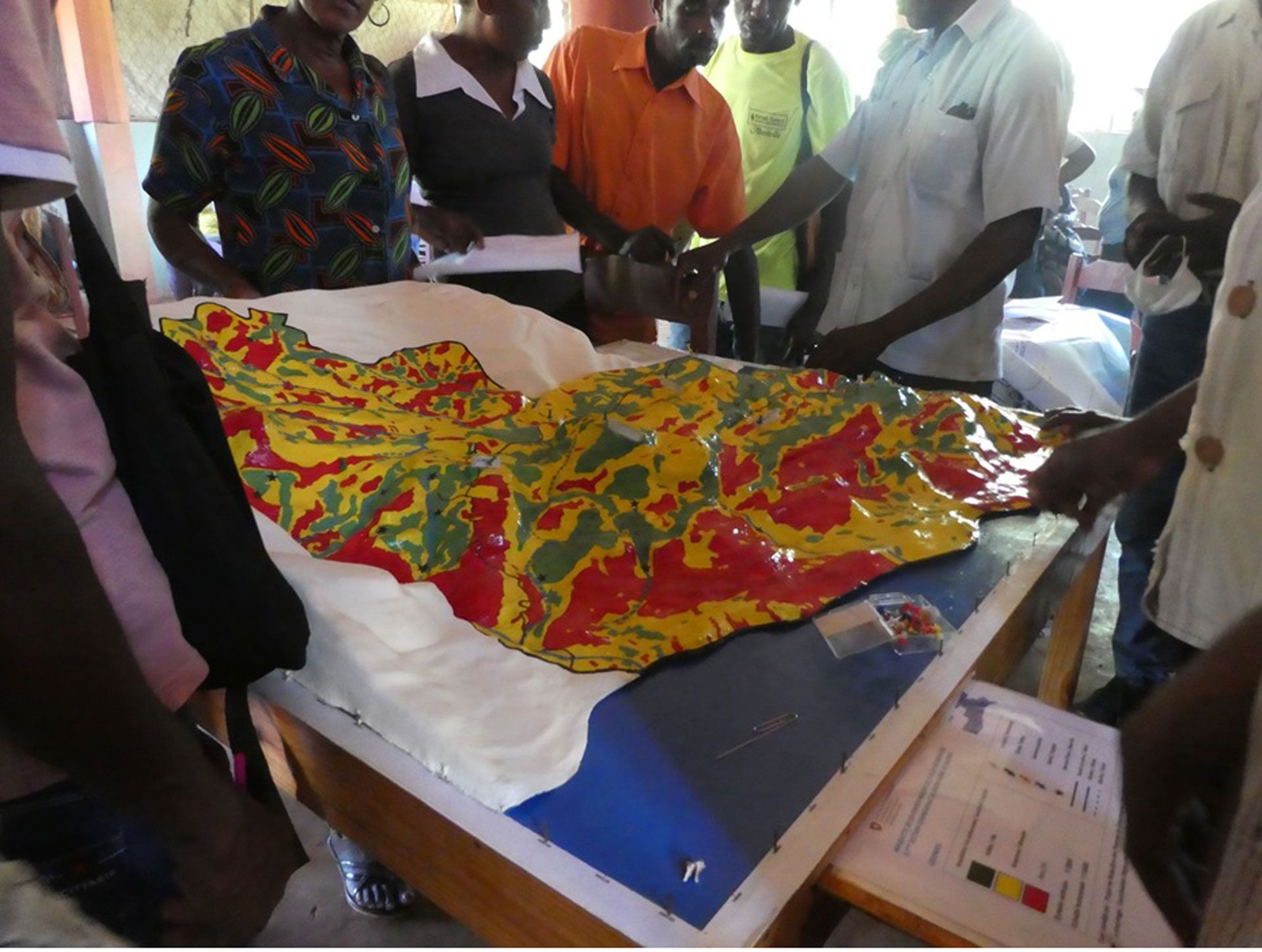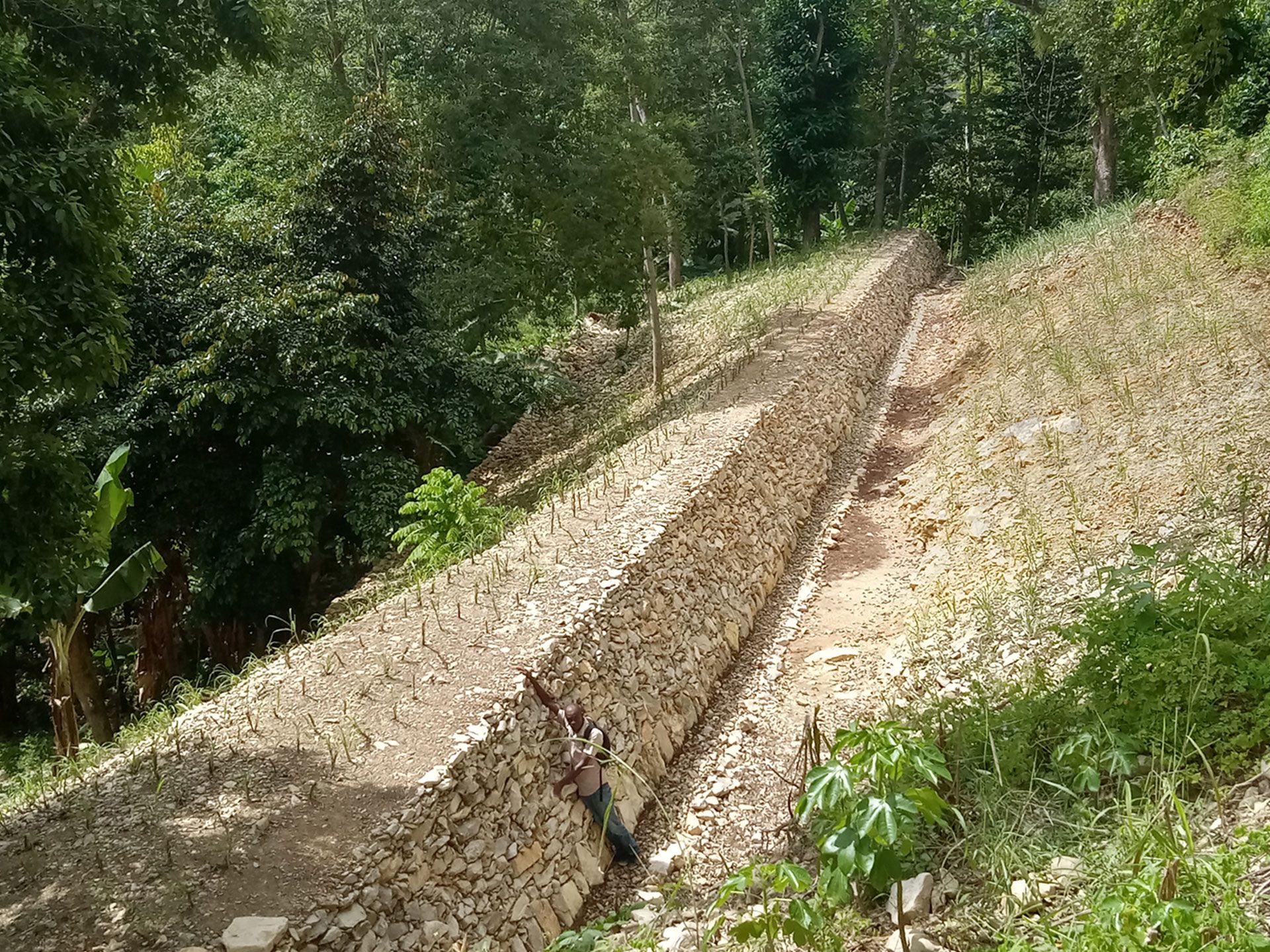Haiti: preventive measures to better adapt to climate change
In addition to the violence faced by those in the capital Port-au-Prince, almost the entire Haitian population is exposed to natural hazards. Climate change is only making the situation worse. Over the last few years, the SDC has carried out a number of disaster risk reduction projects in the Sud-Est department of Haiti. Communities, town councils, local organisations and national institutions shaped and participated in all the work, which was completed at the end of 2023. This is how it went.

Jacmel, Cayes-Jacmel and La Vallée de Jacmel are three municipalities in the Sud-Est department of Haiti. Their topography is typically mountainous, with steeply sloping terrain, exposing the population to natural hazards such as hurricanes, drought and landslides. This is what motivated the SDC to intervene directly with the expertise of the Swiss Humanitarian Aid Unit (SHA).
Participatory mapping and awareness-raising models
During the pilot phase from 2014 to 2016, this direct action focused on training national specialists and drawing up risk maps. To achieve this, the SDC used an approach that combined scientific knowledge with local empirical know-how. This participatory mapping made it easier to understand and analyse the risks. The work was complemented by papier-mâché models showing the topographical hazards in three dimensions.

The SDC also focused on schools. Some 40 teachers from four public schools in Jacmel incorporated disaster risk management into their curriculum, enabling more than 1,000 schoolchildren to learn about the issues at stake and how to act in the event of a disaster.
Local and national collaboration
From the outset, the aim of the direct action was to strengthen local capacity and governance in risk management. This made it an integral part of the local governance activities supported by the SDC's development cooperation in Haiti. SHA specialists worked with local communities and organisations, municipal authorities and the national ministries concerned. They organised dozens of training courses for all those involved in risk and disaster management.
At the municipal level, Jacmel, Cayes-Jacmel and La Vallée de Jacmel adopted a construction management tool that took account of natural hazards. They also developed a new procedure for granting construction permits that took those risks on board. In addition, the SDC's direct action supported local Haitian civil protection committees by providing them with equipment, for example for sounding the alarm. It also supported them in drawing up contingency plans for use in the event of a disaster. The plans were tested during simulation exercises.
Protective structures using local resources
In 2018, the SDC set up a project office in Jacmel with a staff of up to 20, including Haitian specialists and several members of the SHA. The office coordinated the construction of technical protection works. As projects were set up, they gave partners the opportunity to put into practice the risk governance principles they had learnt during the training courses.
As in the case of the construction of a rockfall barrier at Cayes-Jacmel, a community steering committee planned the work and allocated tasks. The structure protects the homes at the bottom of the slope from rockfalls. In Jacmel, the construction of gabion walls along a river protects local residents from flooding and prevents the school and houses from being washed away during torrential rains.
The SDC's direct action also made use of bioengineering. Using carefully selected stones and plants, communities took steps to reduce the risk of erosion and flooding. In La Vallée de Jacmel, for example, low dry stone walls, micro-terraces, wattle-and-daub barriers and the planting of vegetation helped to stabilise agricultural plots threatened by landslides. Seeing how effective those measures were inspired other farmers to follow suit. In the end, almost 700 people benefited from the measures, covering a total area of more than 150 hectares – the equivalent of 150 football pitches.

Consequences of instability
Because of its isolated location, the Jacmel region has been relatively untouched by the violence that has plagued the capital Port-au-Prince and the surrounding area for several years. That said, the political crisis and instability had an impact on the direct action. Town halls only receive their annual budgets in dribs and drabs. In some cases, they have salary arrears of 40 months. As a result, many ministerial offices in the municipalities have lost their staff, who have been forced to find alternative sources of income.
Despite the difficult circumstances, the SDC's direct action benefited from the professionalism of the local people, be it municipal engineers or local skilled artisans. The gender issue was also fully integrated across the project, from the management of the SDC office to implementation on the ground. The SDC ensured that posts were fairly distributed between women and men, with specific gender-based training. It carried out participatory awareness-raising sessions on-site, where work was being carried out. Like the examples that preceded it, the disaster risk reduction project in Jacmel will provide a very good basis for future direct action in Haiti.
Contact
Eichenweg 5
3003 Bern

